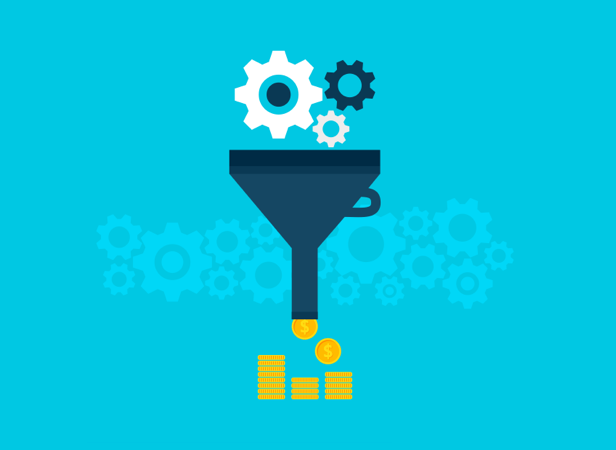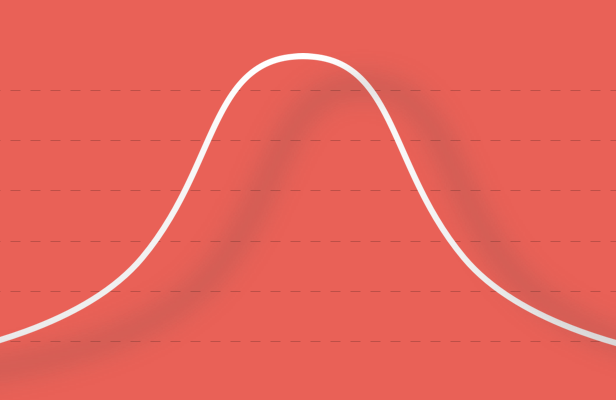Category
Data & Analytics
#Data & Analytics
50+ KPIs to Measure Your Mobile Game or App
Editors note: we release bi-annual mobile gaming benchmarks report which pretty much includes all of the metrics mentioned below. Compare how your game is performing against up to 100,000 games in the industry here. What Are Mobile KPIs? So you’ve created an awesome mobile app. The design is perfectly intuitive and visually stunning. It works even better than you thought it would. In fact, you are starting to wonder how you ever lived without it. You’re even starting to see some measurable results based on industry standard key performance indicators. Naturally, you hope that your audience likes it as much as you do, or at least enough to generate some revenue! Figuring out your mobile app’s value and assessing your app’s performance starts with knowing which mobile KPIs (key performance indicators) and mobile app metrics are the ones that you should...
#Data & Analytics
A Deep Dive into Funnel Reporting for Games
Funnels are a way of visualizing and measuring how your players move through a sequence of events, or ‘steps’. A well-configured funnel gives insight into which of these steps lose the most players, whether your paths to conversion are optimized, and whether your players are progressing through your game as intended. The aim of this post is to give you all the insights you need to make the most of GameAnalytics funnels. We’re going to start with some background and cover the basic concepts, before ‘diving deep’ into some of the more advanced practices to help supercharge your setup, including how to create and track custom events. Plan your custom events with this free tool… We’ve also created a worksheet for you to use for inspiration when creating your custom event IDs. View it in Google Sheets here (click ‘file’ > ‘make a copy’...
#Data & Analytics
6 Game Analytics Questions: Answered by Data Scientists
Top 6 GameAnalytics questions: Can I use the same pair of keys for all platforms I am targeting? What common KPIs should I track using design events? I have sent events but I cannot see them in the tool. Where are they? I’ve setup IAP validation but all my monetization data is still invalid. Why? Can I automate the data export feature? Why did my funnel report fail to process? If none of the above concern you – good stuff. Maybe check out our recently updated post: how to increase your game revenue by 510% 😀 1. Can I use the same pair of keys for all of the platforms that I am targeting? Short answer: This is possible but we don’t recommend it. Long answer: We suggest that all users create a unique game entity for every platform that they target....
#Data & Analytics
The power of benchmarking in your game
Benchmarks allow you to determine how well your game is performing compared to similar titles on the app store, without requiring any changes to your code. This knowledge can help you make decisions and focus your development on improving game metrics and making a better game. Your core KPIs are the central metrics that we benchmark. KPIs are particularly important as they are usually simplified numbers which quickly inform you about the health of your game. Retention, for instance, is a measure of addictiveness or stickiness, as people come back and play your game again the next day. ARPU is a measure of monetization and pricing. High ARPUs require good game design in presentation and purchase so that a user understands the benefit and value of their purchase. Let’s take a deeper look at how you can use the Benchmarking feature from GameAnalytics in your game today. Understanding Benchmark...
#Data & Analytics
5 most common mistakes of data analysts
This is a guest post by Peter Fodor, the founder of AppAgent, a service for mobile developers who are launching a game or app but need help with marketing and user acquisition. Did you know that there are 1,736,111 Likes on Instagram; 284,722 shared snaps on Snapchat; and 590,278 swipes on Tinder every minute of every day? The growth in the usage of mobile apps and games has created a mountain of data. Millions of users generate significant traces of their behaviour – all of which has value. Crunching the numbers are the legions of data analysts whose skills are increasingly in demand. The need to find meaningful connections from this data is increasingly putting pressure on these analysts, whose insights and conclusions can affect billion-dollar businesses. Eating numbers for breakfast Historically analysts were people with a narrow expertise in...
#Data & Analytics
8 ways of spotting and fixing the reasons why players are leaving your game
The following article is based on a previous one we published on the GameAnalytics blog: 16 reasons players are leaving your game, which you can find here, written by Nathan Lovato. This article has been trending on our blog, and it’s a hot topic among developers who are looking to optimize their user experience. Considering this, we’ve thought to complement Nathan’s piece with examples of how you’d use analytics to spot and fix the problems listed. Share the post with this ready-to-go tweet 🙂 To make sense of it all, we’ll follow a similar structure to what Nathan used: listing the reason and the way you can investigate it through the use of analytics. Note our numbering will differ as we won’t be discussing all the reasons. If you didn’t get a chance to read the 16 reasons…, do so now –...
#Data & Analytics
Chinese Gamers: in-game behaviour of players from China
During the last few years, the Chinese market has become a massive opportunity for game developers. There are 550 million active smartphones and tablets in the country, and every one of them has an average of 5 games installed. The key questions to answer, therefore, are about the players: How do Chinese players compare to players from the rest of the world? What do they prefer to play? How committed are they to a game? How many games do they usually play? We set about answering these questions and more from a data-driven standpoint, and analysed the data in the GameAnalytics network by comparing Chinese players’ in-game behaviour to that of players from the rest of the world. So what are the results? Here’s a teaser. What we found is that Chinese players in our network are: Less likely to...
#Data & Analytics
Mobile Games KPI Benchmarks for September 2015
Here we go again with another benchmarks update! As you may know, Benchmarks is a feature that allows you to compare your KPIs to those of 6,000 (and counting) other games tracked by GameAnalytics. Trends in the industry are continuously moving, and we offer you a reference point from which to start your analysis and drive business decisions. If you are wondering what the current situation of the market is, you should log in and check it out. Benchmarks for September are up and ready! Some highlights for September 2015: ARPDAU, ARPPU and Conversion have increased for genres such as Word, Trivia, Sports and Puzzle. Although retention overall has not increased, the same substantial growth is found in session length. This might be a direct consequence of people going back to work after vacation, and therefore, daily commuting....
#Ads & Monetization
How to Identify Whales In Your Game
Monetization has been a hot topic in the games industry over the past years, ever since the rise of free to play games. How to optimize monetization, how to define correct pricing buckets or how to better convert players are just a few of the widely discussed questions concerning the topic. In this article, however, we’ll be approaching monetization from a different angle. Rather than discussing how to achieve a high conversion rate, we will dig into the differences in behaviour between converted players and non-monetizers. With this we’re looking to give you some insights into these players’ profiles, based on which you should be able to identify them early in the game. We will be working with two main categories (non-monetizers and monetizers), but 4 cohorts. For granularity purposes, we have broken down the monetizers category into 3 types:...
#Data & Analytics
Mobile Games KPI Benchmarks for July 2015
As you may know, at the end of May we released Benchmarks, feature that helps you bring more context to your analysis by allowing you to compare your KPIs to those of 5,800 (and counting) other games tracked by GameAnalytics. As trends in the industry are constantly moving, we will be updating these numbers monthly. This month’s update was just released and is up now in the tool, for you to check out. Here are the highlights for July 2015: ARPDAU across the GameAnalytics network increased by almost 12% (from 2.37 cents to 2.66 cents), which was driven by increases in both conversion and ARPPU. This means that in July, not only have there been more people spending money in games, but they also spent greater amounts than in June. ARPPU in particular increased by 50...
#Data & Analytics
How To Do An Efficient Game Test
We would love to think that our creations provide a great experience from the get-go. That they are rock-solid, that we don’t need to run tedious series of Beta test sessions. But we have a terrible bias in favor of what we do. We invest so much time and energy into our work that it is hard to take a step back. We are so connected to our creation, so deep into our work that we can’t keep track of the big picture all alone. Our vision is often more clouded than we would like to think. Last year, I drew an Asian-inspired character for a game project. I was quite content with the looks of it, so I shared the illustration publicly. Soon after, a fellow artist took a look at it and commented: “The colors are nice but…...
#Data & Analytics
Everything You Need to Know About Interpreting KPIs
There are 12,000 games released on the US apple store each month. More than 400 each day on a single platform. Although they are of varying quality, the concurrence is fierce and it is hard to get visibility. More important even, is the fact that as a team, we want to rely on luck as little as possible: the risk isn’t only on our shoulders, but also on our teammates’. As a business, we have some objective tools at our disposal to see where we are going. We can estimate the risk our work represents, and the precise objectives we have to reach in order to survive as a game company. Those tools are collectively called Key Performance Indicators, or KPIs. What are key performance indicators? KPIs are metrics that are used to measure the performance of your games, your...
#Data & Analytics
What Analysing 400+ Games Has Taught Us
Each year brings with it a set of new fads in gaming, some make it, some falter, but one question is ever present: what makes a game successful? In an attempt to answer this, we looked at the evolution of key game metrics over 90 days after launch, across 415 games released in 2014 and spreading across multiple genres and platforms.











